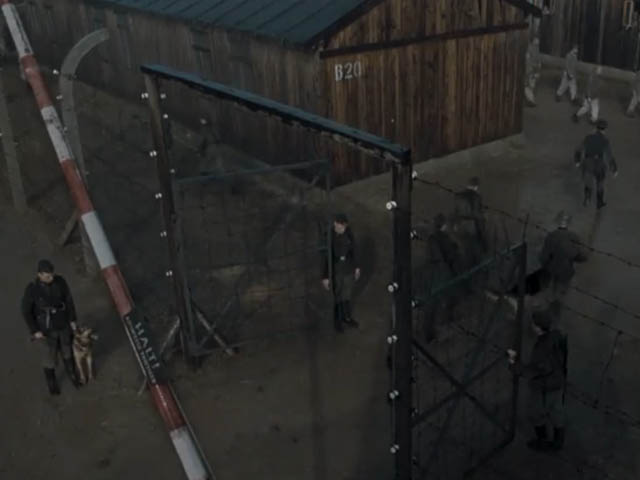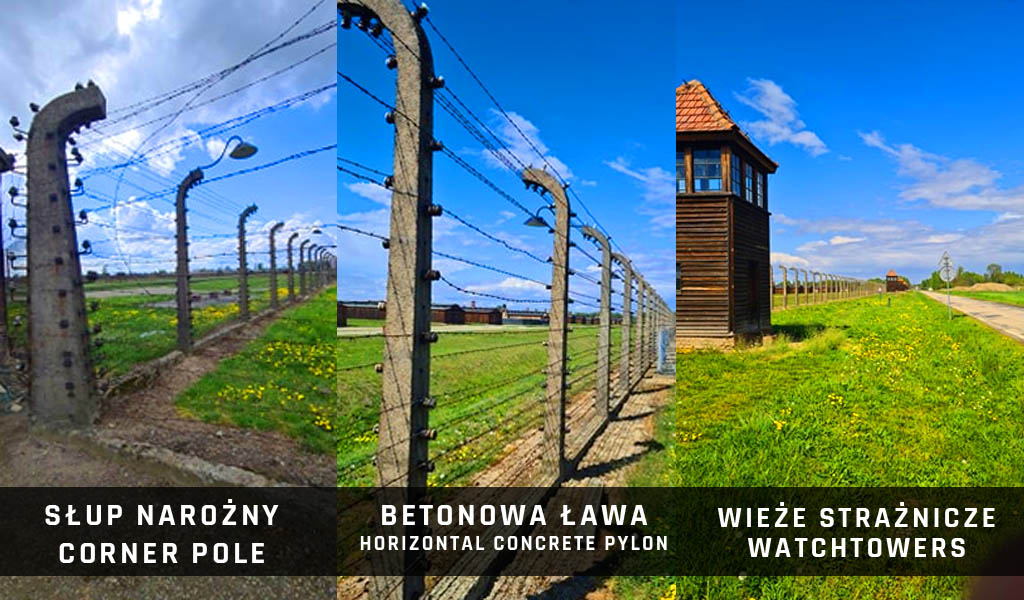"The Boy in the Striped Pajamas" - "almost" perfect movie
"The Boy in the Striped Pajamas" is one of the most famous films about the the Holocaust. However, the film contains a lot of errors and inaccuracies, as well as events that could not have taken place.
Many times, during my trips to Auschwitz, I was asked the question: "can you show us where the plot of the film took place?" At that point, I am forced to tell the guided people the brutal truth. The story shown in the film did not take place either in the Auschwitz camp or in any other camp. I will briefly discuss errors and inaccuracies related to the film, assuming that the authors meant the Auschwitz-Birkenau camp.
Why Auschwitz and where did the errors come from?•
- This is by far the largest death camp and death factory on a massive scale, as well as a symbol of the Holocaust. For example, in Ireland, when you say "concentration camp", "extermination", "death camp", 95% of people will either know Auschwitz or Auschwitz-Birkenau.
- The film is of US/English production. We must take into account that most people from those countries have not heard about, for example, Treblinka or Bełżec... They usually associate extermination camps and concentration camps with Auschwitz.
- Fence. The Auschwitz camp had characteristic concrete poles that can be seen in the film. Camps like, for example, Majdanek had a wooden fence. The arrangement of the wires is inaccurate. In Birkenau, the wires were installed in parallel. In the film, however, we see the arrangement in rectangles. Also, pay attention to the corner pole, which significantly differs in size.
- "Death Belt". In the film, the scene often repeats where the boys talk to each other near the fence. In every camp, even prisoner-of-war camps where prisoners were kept, the so-called "death belt" was built. It was a strip about 5-10 meters wide. Crossing it meant being shot by guards patrolling the camp or sentries from watch towers.
- Guard towers. Note that in the film we don't see either guard towers or guards who were patrolling the camp along the fence, often accompanied by dogs.
- Wooden fences inside the camp. In the Birkenau camp, which was divided into internal sectors (BI, BII...), they were not separated by a wooden, but a concrete fence.
- Wrong camp topology. In one of the last scenes, we see the commander running into the camp through one of the gates. It can be seen that the barracks are very close to the fence, far too close. The aforementioned death belt is missing.
- In the film, during the SS meeting, we see the plans for crematorium number 4. Only the Auschwitz camp had so many "stationary" crematoria, exactly 5. In the remaining camps, there were from one to three crematoria. Hearth grates or pits were also used for cremation of corpses.
- In one of the last scenes, the boys enter the underground changing room and then walk into the gas chamber. Only crematoria number 2 and 3 in Auschwitz were arranged this way (three floors: underground changing room, gas chamber, gold refining works; level 0 - crematorium furnaces, level 1 - the place where members of the Sonderkomando lived).
- The gas chambers in which Cyclone B was used were built in Auschwitz, Majdanek, Stutthof, Buchenwald, Ravensbrück, and Dachau. Apart from Auschwitz, they had a completely different layout and appearance.
- A commandant’s child never died during the service in extermination or concentration camps.
- The Auschwitz commandant's house was located about 3 kilometers from the Birkenau camp. There are no watercourses, rivers or ditches with water between these two camps.
- Mountains and hills. While observing the topology of the terrain, we can see hills in the background. The Auschwitz camp is located on flat ground...
- Forest. Assuming Bruno walks to the camp from the villa taking the shortest route, he should exit the forest on the eastern side of the camp, where there was actually no forest. The forest surrounds the camp from the side of crematoria number 4 and 5, as well as from the side of the unfinished sub-camp, the so-called Mexico.
- Underground passage. The fence at the Auschwitz camp has concrete horizontal pylons between the pillars, located at the depth of about 1 meter. The excavation shown in the film was impossible.
- Numbers on striped uniforms. In the film, we see quite low numbers of prisoners. Assuming that the year was at least 1943 (gas chambers 2 and 3 operated since then), we see a very low number 38451. At Auschwitz, numbers were given cumulatively, and the number of prisoners for 1943 can be estimated in hundreds of thousands. Moreover, there is no characteristic marking of prisoners (colored triangle) symbolizing the type of prisoner: Jew, political, prisoner of war...
- Gas inlet. Chambers 2 and 3 had specially profiled "baskets" through which the cyclone B pellets were thrown in. The process was carried out in such a way that the largest amount was located on the ground. In the film, we can clearly see that the SS man pours gas onto the "head" of the victims. This solution worked in gas chamber number 1 at the Auschwitz camp, not Auschwitz-Birkenau.
These are not all mistakes in the movie. I just dared to show as many absurdities as possible. I am fully aware of the fact that the film is a story which is supposed to play on the viewer’s feelings... This is understandable, but unfortunately an extremely large group of people consider this film as a determinant of "the truth about the camps", as the book "The Tattooist of Auschwitz"... Once again, I have a huge request: before we speak about a given topic, let's not rely on films, especially of the US production. Let's look at other sources: books, e-books, the Internet ...
Very often, there are inaccuracies in films on this subject that 90% of people may not notice. I am not talking only about the movie " The Boy in the Striped Pajamas ", but also about other films such as: "The Devil's Arithmetic", "Triumph of the Spirit" or "Escape from Sobibór". I suspect that the authors of this film (made on the basis of the book) did not have bad intentions. From the viewer's perspective, the plot is quite interesting and original, unfortunately it is not related to the reality of the camp life and the events depicted in the film.
Archival photos - public domain. If copyright has been violated, please contact me. The photos have been added for information, not for profit or for surreptitious advertising.



